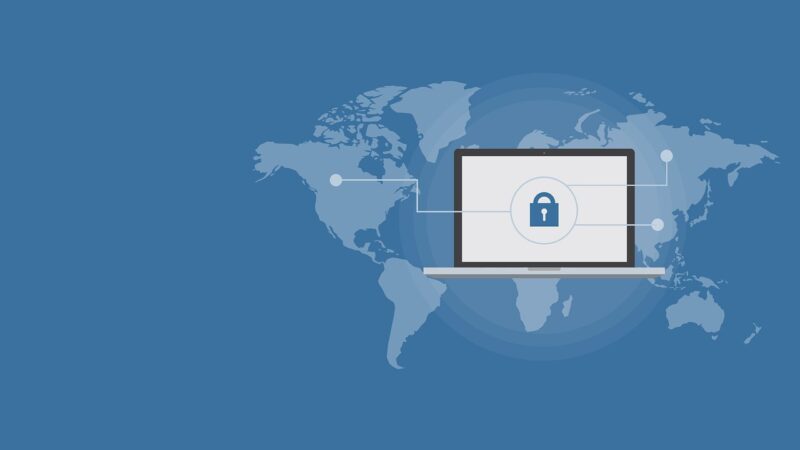Understanding the Distinction Between Virus, Malware, and Spyware

In today’s digital age, almost everyone uses a computer or a device connected to the internet. This widespread use has led to an increase in cyber threats such as viruses, malware, and spyware.
These terms are often used interchangeably by many people, but there are crucial differences that set them apart. One important fact to know is that malware is a general term that refers to any malicious software designed to harm or exploit any programmable device, service, or network.
Unlike what some might think,, not all malicious software works the same way; for example, viruses self-replicate and spread while spyware secretly monitors user activity.
Our blog aims to shed light on the distinction between virus, malware, and spyware—explaining their characteristics, how they infiltrate your system,, and the specific harms they can inflict.
By understanding these differences,, you’ll be better equipped with knowledge for online security., We will also guide you through effective data protection methods against these cyberattacks,.
ensuring your information remains safe from unauthorized access. Get ready to enhance your cybersecurity awareness! Stay safe online starts here.
Key Takeaways
- Malware is a general term that includes viruses, spyware, and other harmful software designed to damage computers or steal information.
- Viruses attach themselves to files and spread across systems, causing harm by corrupting data or taking control of computer functions.
- Spyware secretly gathers personal information without your permission, tracking what you do on your computer.
- Protecting against these threats involves using strong passwords, keeping software updated, and having good security programs on your devices.
- Cookies can be misused by hackers to collect private information if they get access through malware like spyware.
What is Malware?
Malware includes various types of harmful software that can damage computer systems and compromise data security. It is essential to understand its definition, types, and the potential harm it can cause to effectively protect against it.
Definition and types
Malware stands for malicious software and includes a range of harmful programs like viruses, spyware, worms, and more. It’s a general term that covers any file or code created to damage users’ computers and networks.
Viruses are the most recognized kind of malware. They attach themselves to files, spreading across systems and causing destruction. Spyware collects personal information without consent and sends it to others.
Each type has its unique way of infiltrating and damaging computer systems.
Understanding the distinction between virus, malware, and spyware is crucial in bolstering data security against cybercrime.
These threats vary greatly in their methods of attack; for instance, some may steal personal information to commit fraud while others could use your device for sending spam. Despite their differences, all pose significant risks to internet security and user privacy by exploiting vulnerabilities for malicious purposes.
Recognizing these types helps in applying effective online threat protection measures.
How it can cause damage to systems
Malware, including viruses and spyware, can cause significant damage to computer systems by corrupting or deleting files, slowing down computing processes, stealing sensitive information such as passwords and financial details, and even rendering the entire system inoperable.
These malicious software threats also have the potential to disrupt network communication and lead to system crashes. Malware is adept at exploiting security vulnerabilities within systems, exposing them to cyber attacks that could result in substantial financial losses for individuals and organizations alike.
Viruses are notorious for their ability to replicate themselves within a computer’s files or programs, causing widespread damage. They can spread rapidly through email attachments or infected downloads while infecting vital system functions.
On the other hand, spyware poses a different threat by secretly gathering personal data from users without their knowledge or consent. It can track browsing habits and record keystrokes leading to compromised privacy and security breaches.
Both malware types serve as breeding grounds for online threats that carry severe consequences if left unchecked, emphasizing the essential need for robust cybersecurity measures.
slowing down computing processes,
stealing sensitive information,
disrupt network communication,
system crashes]
What is a Virus?
A virus is a type of malicious software that can replicate itself and spread to other computer systems. It differs from other malware in its ability to attach itself to legitimate programs or files, allowing it to infect more computers.
Characteristics and modes of transmission
A virus is a type of malware that can replicate itself and spread from one computer to another through infected files or software. It often attaches itself to executable files and can also be transmitted via email attachments, USB drives, and malicious websites.
Once a virus infects a system, it can execute its code, causing damage to files and disrupting the normal functioning of the computer. In contrast to other types of malware, viruses need human intervention in order to spread, such as opening an infected file or running an infected program.
Malware encompasses various types of malicious software designed to disrupt or damage computer systems. It includes viruses, worms, Trojans, spyware, ransomware, and adware. Malware can be transmitted through phishing attacks via email links or attachments containing malicious code.
Additionally, it can infiltrate systems through unsecured networks or software vulnerabilities. Once inside a system, malware can steal sensitive information like login credentials or credit card details; modify or delete files; encrypt data for ransom demands; turn devices into bots for large-scale cyberattacks; and display unwanted advertisements on web browsers.
How it differs from other types of malware
A virus is a specific type of malware that attaches itself to a file or program and replicates, spreading from one system to another. Unlike other types of malware such as spyware and adware, viruses require human intervention to replicate and spread.
Additionally, while all viruses are considered malware, not all malware acts as a virus. Therefore, the key distinction lies in how they propagate and their specific methods for causing harm.
Malicious software detection
Computer security
What is Spyware?
Spyware infiltrates systems for gathering personal information and online behaviors. It operates covertly, making it challenging to detect and remove.
Purpose and methods of infiltration
Spyware infiltrates computer systems with the primary purpose of collecting personal information, such as browsing habits, passwords, and credit card details. It commonly gains access through free software downloads or deceptive email attachments.
The infiltration methods include phishing emails and malicious websites that prompt users to click on links, allowing spyware to covertly install itself onto the system.
Protecting against these infiltrations requires robust computer security measures and a proactive approach to identifying and avoiding suspicious online activities. Computer users should remain vigilant in recognizing potential threats in order to safeguard their information from malicious intent.
Differences from viruses and other malware
Malware encompasses viruses, spyware, and worms – it’s a broad term. However, viruses specifically attach themselves to files and replicate. On the other hand, spyware aims to gather personal data without damaging the system.
Viruses infect files and spread further, whereas spyware focuses on information collection. This distinction is crucial in understanding how different types of malware operate within computer systems and networks.
The Role of Cookies in Malware
Cookies are small pieces of data used by websites to track and identify users. They can be exploited by malware to gather sensitive information and compromise security.
What they are and how they can be used
Malware, including viruses and spyware, are designed to cause damage to computer systems and steal personal information. They can be used by hackers to gain unauthorized access, distribute spam, commit fraud, and carry out other malicious activities.
The main purpose of malware is to compromise the security of a computer system or network. It poses a significant threat to information security and can lead to financial loss or identity theft if not adequately addressed with proper security measures.
Cookies are small pieces of data that websites store on users’ devices for various purposes like tracking user activity and preferences. However, they can also be exploited by hackers as part of malware attacks to gather sensitive information without the user’s consent.
Hackers may use cookies for unauthorized tracking or collection of personal data, making them a common target for cybercriminals aiming to exploit vulnerabilities in a system’s security.
Why they are a common target for hackers
Cookies are a common target for hackers due to their ability to store sensitive information such as login credentials and browsing habits. By compromising cookies, hackers can gain unauthorized access to personal accounts and gather valuable data about an individual’s online activities.
This makes them an attractive target for cybercriminals seeking to exploit vulnerabilities in internet security.
Spyware, malware, and viruses pose significant threats through the interception of personal data, which has led to cookies becoming one of the primary targets for hackers aiming to compromise user privacy and facilitate identity theft or financial fraud.
The Role of Cookies in Malware – How they can be used
How to Protect Against Malware
– Use strong, unique passwords and enable two-factor authentication on all accounts.
– Regularly update operating systems, software, and antivirus programs to patch vulnerabilities.
Best practices for prevention
To prevent malware, viruses, and spyware from damaging your system, follow these best practices:
- Install reputable antivirus software to detect and eliminate malicious programs, such as computer viruses.
- Regularly update your operating system and security software to protect against the latest internet threats.
- Be cautious when downloading files or clicking on links from unknown sources to avoid inadvertently downloading malware.
- Use strong and unique passwords for all accounts to prevent unauthorized access by malicious software.
- Avoid opening email attachments or links from unfamiliar or suspicious senders to minimize the risk of malware infiltration.
- Enable pop-up blockers in your web browser to prevent potentially harmful ads and notifications from appearing.
By implementing these best practices, you can significantly reduce the risk of malware, viruses, and spyware compromising your computer’s security.
Importance of security software
Security software is crucial for detecting and preventing malicious software, ensuring the safety of personal computers and networks. It plays a significant role in safeguarding systems against viruses, spyware, and other forms of malware.
The detection capabilities of security software are essential in identifying potential threats and taking timely action to mitigate them, thereby protecting sensitive data from unauthorized access or theft.
Utilizing security software also enables proactive monitoring and continuous protection against evolving cyber threats, making it an indispensable tool in today’s digital landscape.
The importance of security software lies in its ability to detect malicious activity such as virus transmission and infiltration by spyware. By implementing robust security solutions, individuals and organizations can effectively protect their systems from insidious attacks that can compromise data integrity and confidentiality.
Proactive measures through security software implementation serve as a critical line of defense against harmful intrusions that can disrupt operations or lead to significant financial losses.
Conclusion
Understanding the Distinction Between Virus, Malware, and Spyware is crucial for safeguarding your systems. Harness practical prevention strategies to fortify your defenses effectively.
How will you apply these insights to shield your digital world? Ensure the impact of implementing these measures for robust protection. Discover further guidance and resources to enhance your cybersecurity knowledge.
Your digital safety lies in understanding and acting on this knowledge swiftly.
FAQs
1. What is a virus?
A virus is a type of malware that can copy itself and spread to other computers.
2. What does malware mean?
Malware is software designed to harm or exploit any programmable device, service, or network.
3. How is spyware different from viruses?
Spyware secretly gathers your information without your knowledge, unlike viruses that usually harm your computer.
4. Can malware include viruses and spyware?
Yes, malware can include both viruses and spyware as it’s a broad term for harmful software.
5. How can I protect my computer from these threats?
Use antivirus software and keep it updated to protect your computer from viruses, malware, and spyware.





